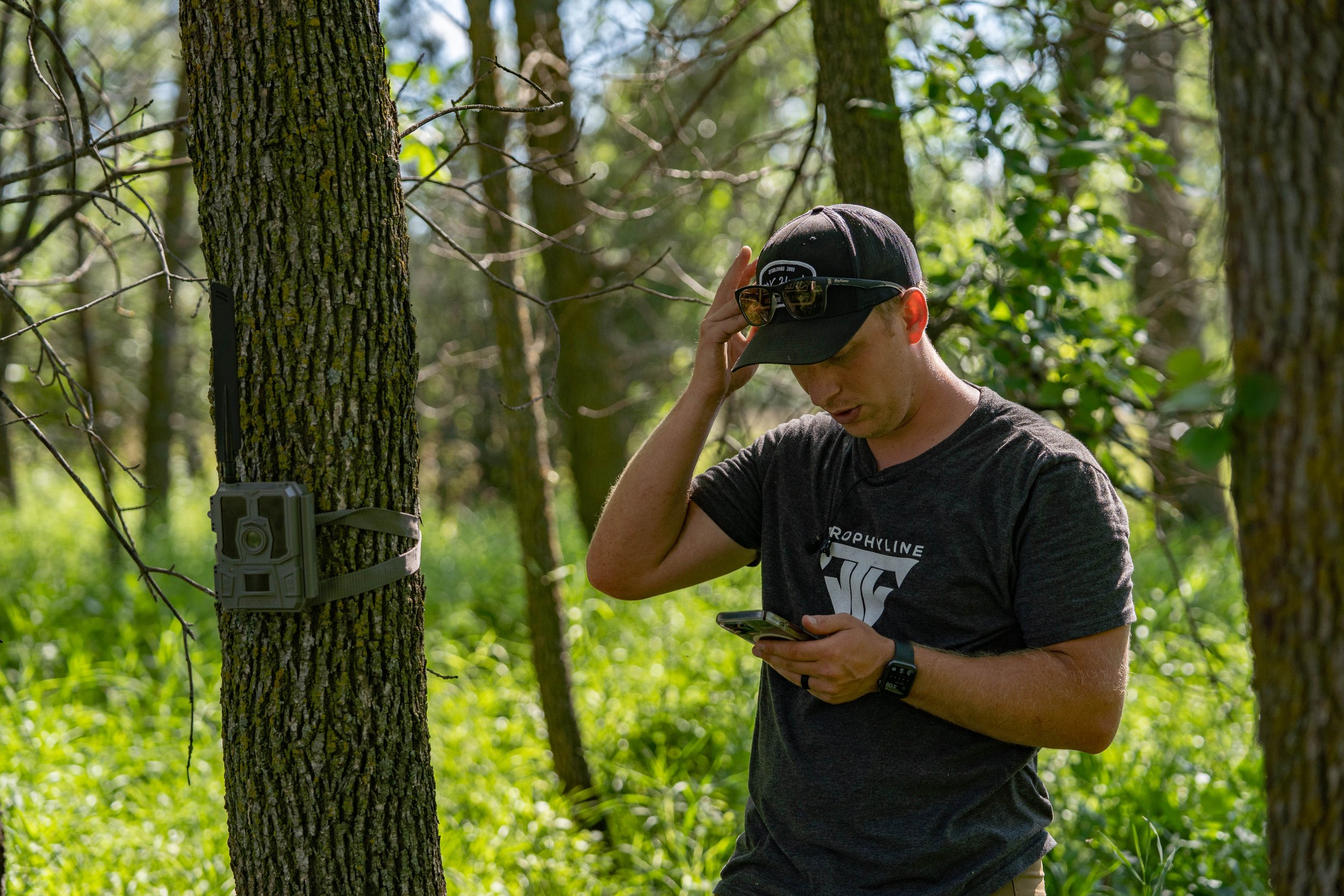By Alex Comstock
Wow, it’s been roughly six months since I’ve written a blog post here on WhitetailDNA. That’s pretty crazy, given that at one time, this was a site where I produced almost daily blog posts. Recently though, I’ve been giving most of my attention to my YouTube channel, where I’ve been producing weekly videos. If you want to go check those out, be sure to visit the YouTube channel HERE. This year, I’ll continue to produce weekly videos on the channel, but I’m going to get back to written content as well. You can look for new blog posts weekly.
With that said, I wanted to kick off getting back into written content with some timely material revolving around shed hunting. Shed hunting is something many whitetail enthusiasts enjoy to partake in this time of year and regardless if you have success or not, it’s a great excuse to get out of the house and into the deer woods. But, we all know it’s still more fun when you do find sheds, so today I’m going to cover some of my favorite “Go-To” shed hunting areas.
Actually finding sheds is always more enjoyable.
South Facing Slopes
A popular type of area to shed hunt for a variety of reasons, southern facing slopes should always be a hotspot you walk. During the winter, southern facing slopes are receiving the most sunlight during the day. Because of this, deer will often bed on southern facing slopes. The colder your climate, the more apt deer are to be utilizing southern facing slopes. Bedding areas are typically where you’re going to find a higher percentage of sheds given the fact that deer are spending the most time in their beds. If you can find a good southern facing slope with any type of bedding cover or natural browse on it, you should definitely be walking that area.
Isolated Pine/Cedar Trees
If I find an isolated pine or cedar tree, you can bet I’ll be on a string right to it. Isolated pine trees (or cedars) are like a magnet for deer. They provide great thermal bedding cover and bucks at least in my experience always seem to be attracted to them. They can be even better if you’re shed hunting some type of marsh area, because under the lone pine will typically be hard ground, which means bucks could be spending an even greater amount of time there. By no means are you going to find antlers under every isolated pine/cedar, but if you make sure to check out under and around everyone you come across, you’ll eventually pick up an extra antler or two.
*Quick story about a spot like this. One of my buddies was out shed hunting years back, came across an isolated pine and knew he had to check it out. Not only did he find a matched set under it, he found two years of matched sets off the same buck, in the same spot! Clearly that buck was using that pine tree as a bedding location and luckily for him, no one had searched for antlers there.
Bucks love to bed on southern facing slopes during the winter months just as this shed buck is doing so.
Swamp Islands
Just as I mentioned in the last point, bucks gravitate towards lone pine trees for a variety of reasons, but in swamp/marsh country, it provides hard ground to bed on. The same goes for any kind of island within a swamp. I personally don’t shed hunt any type of marshy or swampy areas, but I know a lot of people that do, and they are always pulling antlers from and around islands. It could be a hardwood island, a big island or just a tiny cluster of trees like tamaracks or something similar. When shed hunting swamp country, don’t be afraid to trudge through the swamp to get out to a secluded island. It could just provide you with an extra antler or two.
Crop Fields
The last go-to area I wanted to cover was crop fields. If you live or shed hunt areas with crop fields, these are areas you simply need to check out. They usually get picked over first if they lie within public areas or on land where multiple people can shed hunt, but it’s always worth a look. Many times, I’ll walk the edges of a crop field, scanning with my binoculars. If you happen to have standing crops, I like to zig-zag through the rows and if it happens to be standing corn, then it comes down to size. It can be wildly frustrating to shed hunt a large standing corn field, but if it’s a small one, it can be done. If it is big, I stick to typically just the first ten rows or so.
Conclusion
There are many, many areas you could locate shed antlers. These four just happen to be a few of my “Go-To” spots that have produced success for me and others I know over the years. This winter and spring as you’re out looking for antlers, don’t forget about these kind of spots.
































